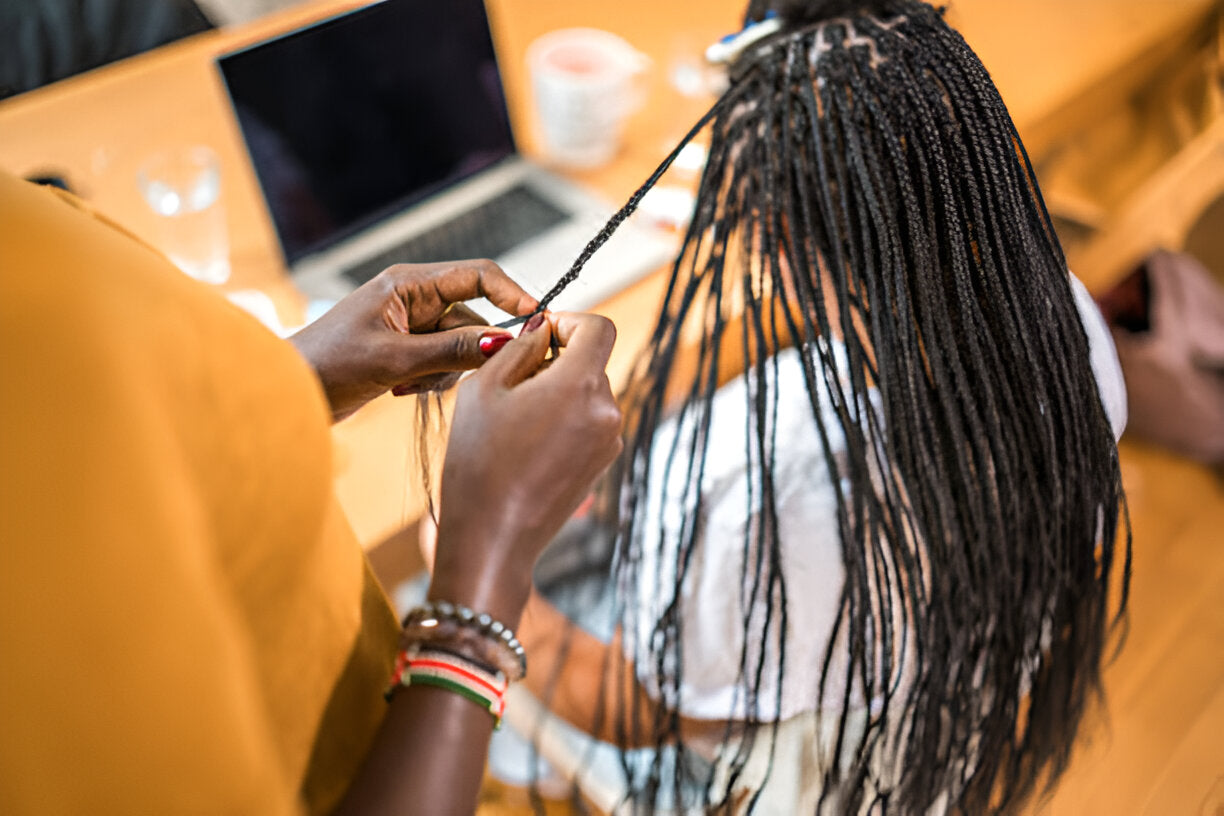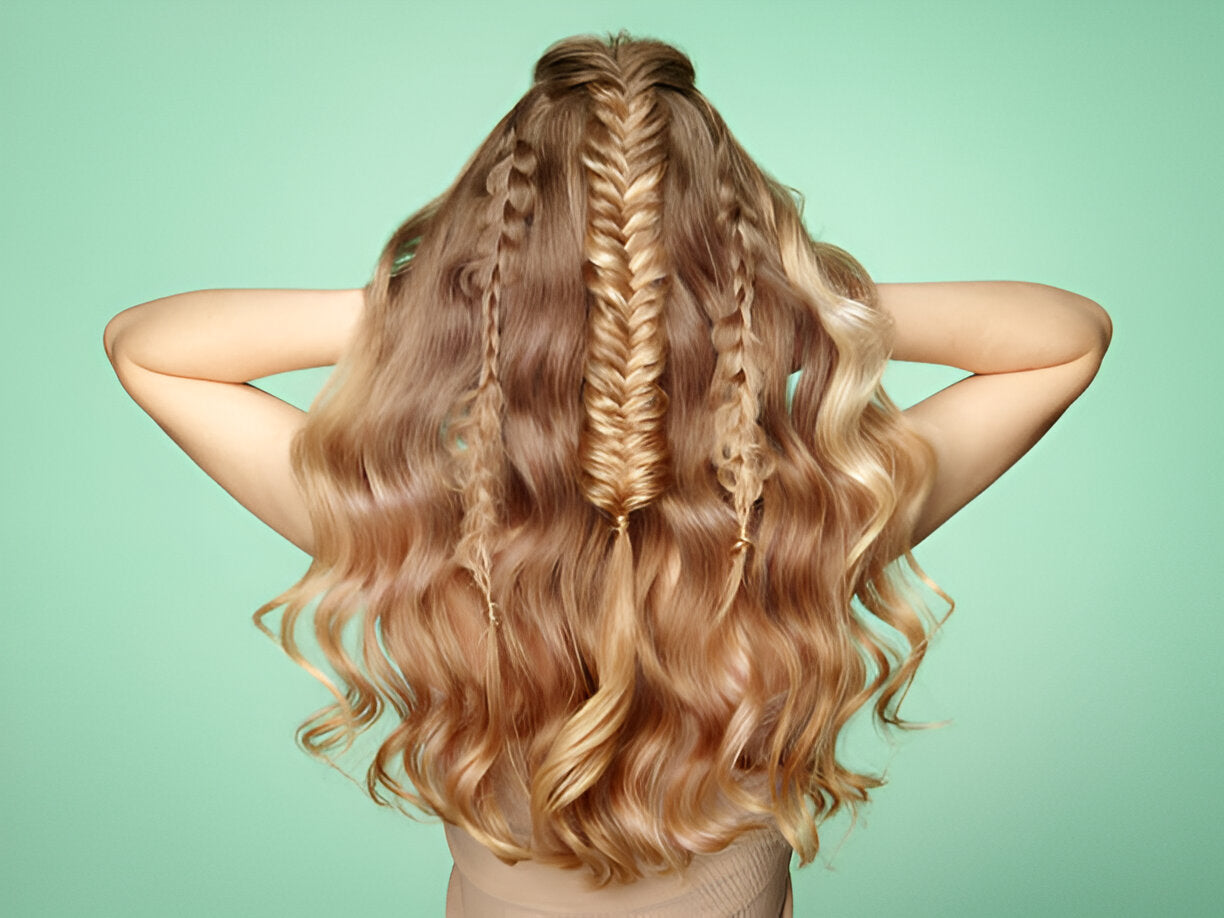Wigs vs braids—it's a debate that many people face when deciding how to style their hair. Whether you're considering a protective style or want a new look, choosing between wigs and braids can be challenging. This article will explore the pros and cons of each option, answer common questions, and provide detailed insights into these popular hairstyles.
Wigs vs Braids: An In-Depth Comparison
When comparing wigs vs. braids, various factors such as style versatility, maintenance, and impact on hair health must be considered. Let's explore these aspects to help you make an informed decision.
Style Versatility: Wigs vs Braids
- Wigs: Unlimited Options: Wigs offer endless possibilities for changing your look. Whether you prefer short, long, curly, or straight hair, wigs provide a quick and easy way to transform your style. This versatility allows frequent changes without cutting, dyeing, or chemically treating your natural hair.
- Color and Texture Variety: Wigs come in various colors and textures, allowing you to experiment without committing to a permanent change. You can try bold colors like pink or blue or opt for different textures such as curly, wavy, or straight, which might not be achievable with your natural hair. This variety allows you to match your hairstyle to different occasions, moods, or outfits.
- Braids: Traditional and Trendy StylesBraids, including box braids and crochet braids, offer a range of styles that can be both traditional and trendy. They provide a unique aesthetic many people love, combining functionality and fashion. Braids can be styled in numerous ways, from intricate designs to simple patterns, making them versatile.
- Cultural Significance and Creativity: Braids often carry cultural significance and allow for creative expression. Many braid styles have deep roots in various cultures and can showcase your personality and heritage. The intricate patterns and styles possible with braids make them popular for those looking to make a bold statement or embrace cultural traditions.
Wigs vs Braids: Which Promotes Hair Growth?
The question of whether wigs or braids promote hair growth is expected. The answer is that neither directly causes hair growth, but both can be protective styles that help maintain healthy hair. Let's explore how each option contributes to hair health.

Wigs: Protection and Versatility
Wearing wigs can protect natural hair from environmental damage and styling stress. By giving hair a break from heat styling, chemical treatments, and daily manipulation, wigs can help maintain their health and length. They also act as a barrier, shielding hair from pollution, harsh weather, and UV rays.
Low Manipulation Benefits
Wigs allow for low manipulation, which reduces breakage and damage and indirectly supports hair growth. By minimizing the need to comb, brush, or style natural hair daily, wigs help preserve the hair's integrity and prevent split ends.
Braids: A Protective Style with Benefits
Braids can protect natural hair, especially when done correctly. They reduce the need for daily styling and can help prevent breakage by keeping the hair tucked away and secure. However, the protective benefits depend on proper installation and maintenance.
Maintaining Scalp Health
Properly installed and maintained braids can keep the scalp healthy and are essential for hair growth. Keeping the scalp clean and moisturized is necessary to prevent dryness and flakiness. However, tight braids can cause traction alopecia, a form of hair loss caused by constant tension on the hair follicles, so it's crucial to be cautious.
Wigs vs Box Braids: Cost and Maintenance
Wigs, especially high-quality human hair wigs, can be expensive upfront. However, they can last a long time with proper care, making them a worthwhile investment. The cost of wigs varies depending on the type, quality, and brand, with human hair wigs generally being more expensive than synthetic ones.
Maintenance and Storage
Wigs require regular washing, conditioning, and careful storage to maintain appearance and longevity. It's essential to follow the manufacturer's care instructions to prevent tangling, shedding, and loss of luster. Proper storage, such as on a wig stand, helps maintain the shape and style of the wig.
Time and Cost Considerations
Box braids can be costly and time-consuming to install, depending on the length and size of the braids. The installation process can take several hours, and the price varies based on the stylist's expertise and the complexity of the style. However, box braids are low maintenance once installed and can last several weeks.
Daily Care and Longevity
Daily care includes moisturizing the scalp and avoiding heavy products that can cause buildup. Adequately maintained, box braids can be a long-lasting style, but they should be kept quickly to prevent damage to the natural hair.
Crochet Braids vs Wigs: Versatility and Convenience
A Blend of Wigs and Braids Crochet braids offer the convenience of wigs with the natural look of braids. They involve braiding the natural hair and then crocheting extensions into the braids. This method is less time-consuming than traditional braiding and provides a similar aesthetic.

Quick Installation and Removal
Crochet braids are faster to install and remove than traditional braids. This makes them attractive for those looking for a change without committing to a lengthy installation process. They also provide various style options, from curly to straight, allowing for flexibility in appearance.
Wigs: Instant Change and Flexibility
Wigs allow instant style changes without committing to a particular look. They are ideal for those who like to switch up their style frequently or need a quick change for an event or special occasion. Wigs can be worn and removed easily, making them a convenient choice for those with busy lifestyles.
Travel-Friendly and Versatile
Wigs are travel-friendly and easily changed, making them versatile for various occasions. They are also a practical choice for those who want to protect their natural hair while traveling, as wigs can be styled and maintained without access to salons or hair care products.
Impact on Natural Hair: Wigs vs Braids
Wigs can have a minimal impact on natural hair. It's important to properly secure the wig and care for the natural hair underneath. This includes washing and conditioning your hair regularly, ensuring it's dry before wearing a wig and using a wig cap to protect your hair.
Avoiding Damage
Avoiding tight wig caps and ensuring the natural hair is clean and moisturized can prevent damage. Taking breaks from wearing wigs is also essential to allow your natural hair to breathe and recover.
Braids: Potential Risks and Precautions
Braids can sometimes damage hair, especially if they are too tight or left in for too long. Tight braids can cause tension on the scalp and hair follicles, leading to traction alopecia and hair breakage.
Preventing Traction Alopecia
Traction alopecia, caused by tight braids, can be prevented by choosing looser styles and taking breaks between installations. Avoiding heavy extensions that can put extra weight on the hair and scalp is also crucial. Regularly moisturizing and massaging the scalp can help maintain scalp health and prevent damage.
Choosing the Right Style: Factors to Consider
Your lifestyle and personal preferences play a significant role in choosing between wigs and braids. Consider how much time you're willing to invest in styling and maintaining your hair and your desired look and comfort level.
Daily Routine and Activities
Consider your daily routine and activities. Wigs offer quick style changes, making them suitable for those with busy schedules or who enjoy experimenting with different looks. Braids provide a low-maintenance option for those who prefer a set-and-forget style.
Budget and Maintenance Commitment
The Budget and willingness to commit to maintenance are also crucial factors. Wigs may require a higher initial investment, especially for high-quality human hair wigs. However, if cared for properly, they can be a long-term investment.
Long-Term Investment vs. Short-Term Cost
Wigs may require a higher initial investment, while braids may involve recurring costs for installation and maintenance. Consider the overall cost of each option, including the time and effort required for upkeep.
Wigs vs Braids: Popular Trends and Innovations
Wigs have seen significant advancements in materials and design, offering more natural looks and better comfort. Innovations such as lace-front wigs and HD wigs have made wigs more realistic and easier to wear.

Lace Fronts and HD Wigs
Lace front wigs feature a sheer lace front that blends with the scalp, creating a natural hairline. HD wigs, made with high-definition lace, provide an even more seamless look, making them popular choices for a natural appearance.
Braids: Trending Styles and Techniques
Braids evolve with new styles and techniques, such as knotless braids and faux locs. These styles offer a fresh take on traditional braiding methods, providing more comfort and versatility.
Experimenting with Colors and Accessories
Adding color or accessories like beads can enhance the look of braids, making them trendy and personalized. Whether you prefer a natural look or bold, colorful braids, there are endless possibilities to express your style.
FAQs
FAQs, or Frequently Asked Questions, provide quick answers to people's common questions. Here are some FAQs about wigs and braids:
Do wigs or braids damage your natural hair?
Both can cause damage if not used or maintained correctly. It's essential to follow proper care guidelines to protect your natural hair.
Can you wash your hair with braids or a wig?
Yes, you can wash your hair with both. For braids, use a diluted shampoo to clean the scalp. For wigs, follow specific care instructions for washing.
How long can you wear wigs or braids?
Wigs can be worn daily, but taking breaks is recommended to allow your natural hair to breathe. Braids can last several weeks, depending on maintenance and the type of braids.
Which is more affordable: wigs or braids?
The cost depends on the type and quality. Wigs may require a higher initial investment, while braids involve recurring costs for installation and maintenance.
Can wigs or braids help with hair growth?
While neither directly promotes hair growth, both can protect natural hair and reduce manipulation, supporting healthier hair growth.
Last words
Choosing between wigs and braids depends on your preferences, lifestyle, and hair care needs. Wigs offer versatility and convenience, while braids provide a protective and culturally significant style. Both options have their unique benefits and considerations. Whether you prefer the instant change that wigs offer or the low-maintenance nature of braids, choosing a style that suits your lifestyle and hair care routine is essential. By understanding the pros and cons of each option, you can make an informed decision and enjoy a beautiful and comfortable hairstyle.


